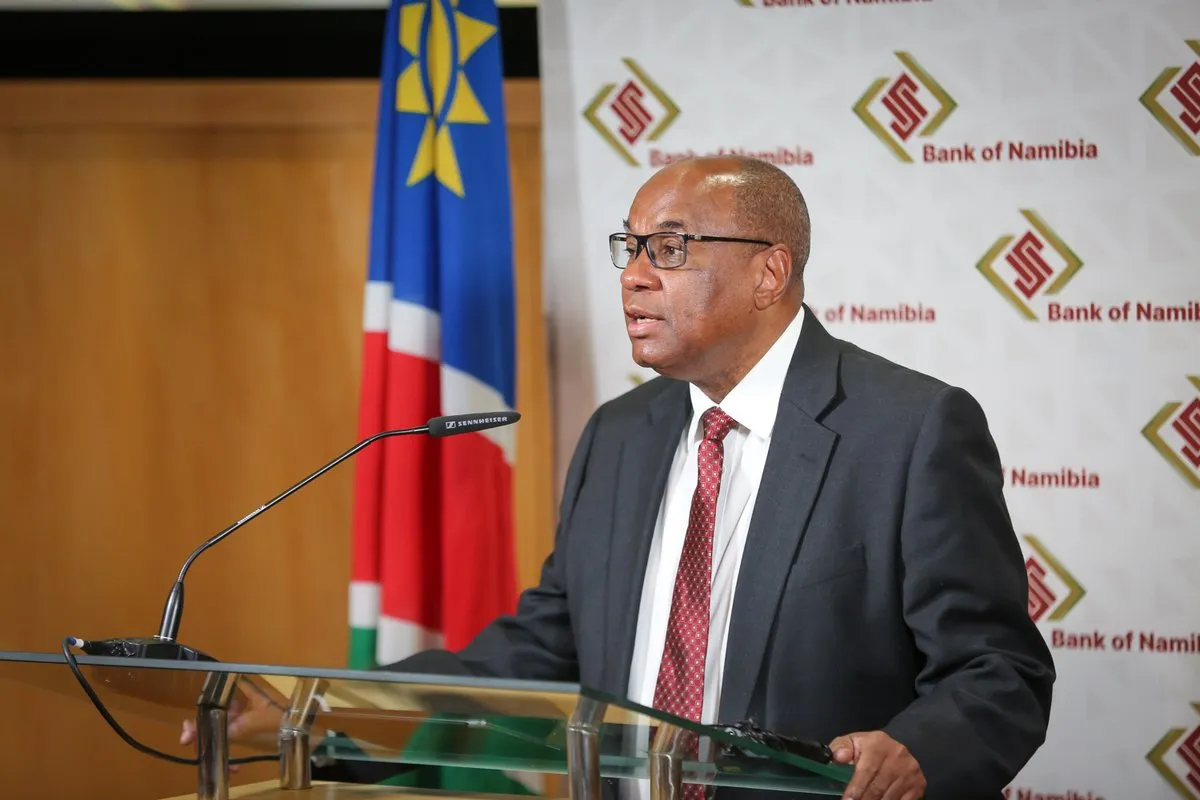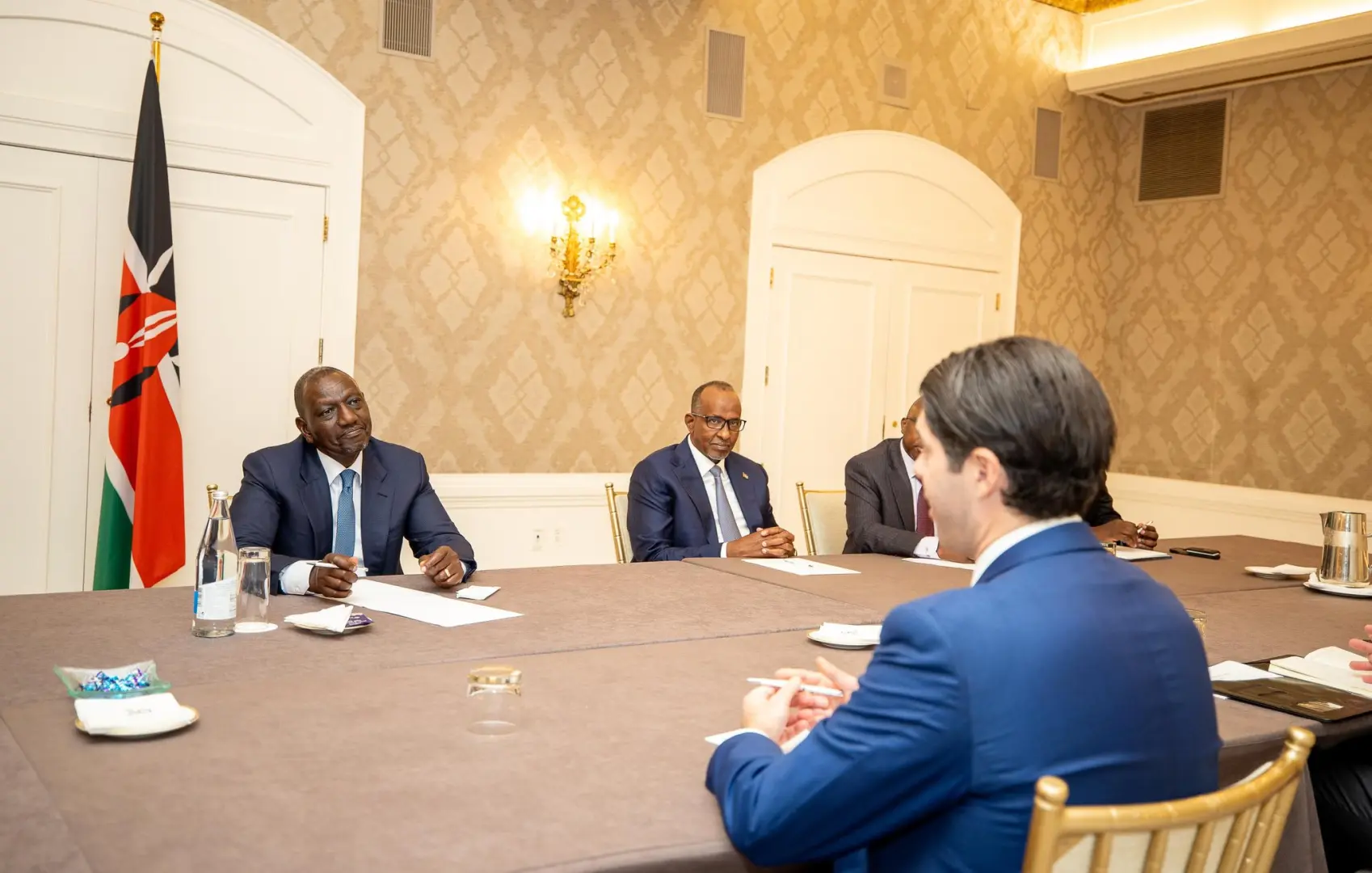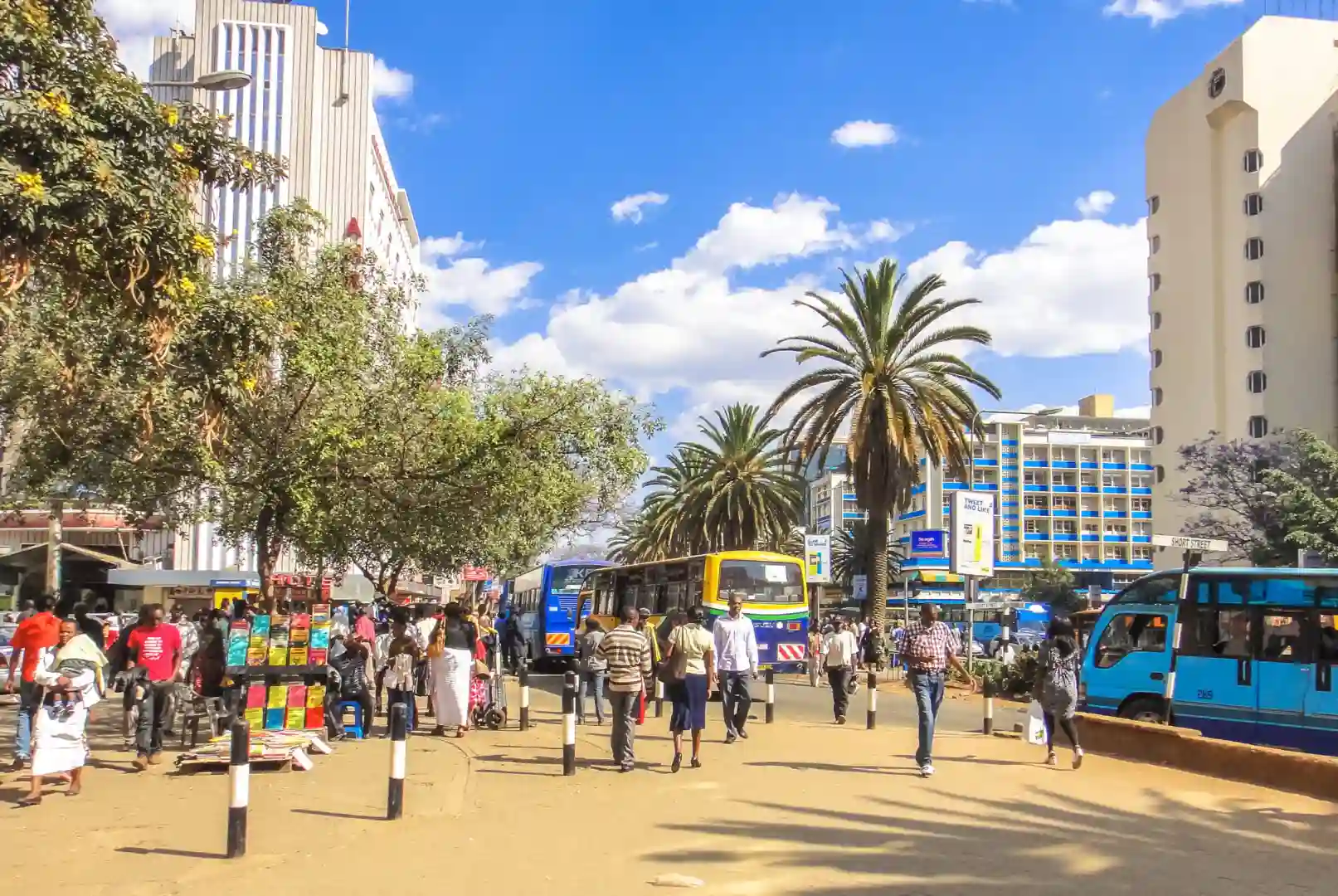In a move reflecting a cautious stance amidst a complex global economic landscape, the Bank of Namibia (BoN), the nation’s central bank, announced on Wednesday its decision to keep its main interest rate, the repo rate, unchanged at 6.75%. This marks the second consecutive Monetary Policy Committee (MPC) meeting where the rate has been held steady, following a series of four rate cuts prior to this period of stability. The central bank emphasized its primary objective: to safeguard the local currency’s crucial peg to the South African rand, a strategic anchor for Namibia’s economic stability, while navigating formidable global risks that are limiting its flexibility to ease monetary policy.
Understanding the Repo Rate and Monetary Policy’s Role
At the heart of any central bank’s toolkit is the repo rate (short for repurchase agreement rate). This is the interest rate at which commercial banks borrow money from the central bank, typically on an overnight basis, against government securities. It serves as a benchmark for all other interest rates in the economy, influencing everything from lending rates for mortgages and business loans to savings rates offered by commercial banks.
By adjusting the repo rate, the Bank of Namibia, like other central banks globally, aims to achieve its mandated objectives, which typically include:
- Price Stability: Controlling inflation to maintain the purchasing power of the currency. The BoN has an inflation target, though not explicitly stated in the news snippet, it generally aims for low and stable inflation.
- Economic Growth: Stimulating or dampening economic activity to ensure sustainable growth and job creation.
- Financial Stability: Safeguarding the health and stability of the financial system.
When a central bank cuts the repo rate, it signals an easing of monetary policy. This makes it cheaper for commercial banks to borrow, encouraging them to lend more to businesses and consumers, thereby stimulating investment, consumption, and overall economic activity. Conversely, holding or raising the rate tightens monetary policy, making borrowing more expensive, which can help cool down an overheating economy and rein in inflation.
Namibia’s decision to hold the rate at 6.75% indicates a careful balancing act. While global central banks are broadly leaning towards rate cuts to counteract economic risks, the BoN’s specific domestic and external considerations, particularly the rand peg, dictate a more measured approach. The previous four rate cuts suggest a period where the central bank aimed to stimulate the local economy, possibly in response to disinflationary pressures or a slowdown in growth. The current pause reflects a shift in assessment of prevailing risks.
The Namibian Dollar’s Rand Peg: A Cornerstone of Stability
A fundamental aspect of Namibia’s monetary policy, and indeed its broader economic framework, is the 1:1 peg between the Namibian Dollar (NAD) and the South African Rand (ZAR). This arrangement means that one Namibian Dollar is always equivalent in value to one South African Rand. This peg is not merely a symbolic link but a deeply entrenched economic reality with significant implications for Namibia’s financial and trade relations.
The peg dates back to Namibia’s independence in 1990. Prior to that, the South African rand was the primary currency circulating in the country. Maintaining the peg offers several critical advantages for Namibia:
- Trade Stability: South Africa is Namibia’s largest trading partner, accounting for a substantial portion of its imports and exports. The peg eliminates exchange rate risk for trade between the two countries, simplifying cross-border transactions and fostering economic integration.
- Inflation Anchoring: By pegging to the rand, Namibia effectively “imports” South Africa’s monetary policy and, to a large extent, its inflation rate. This provides an external anchor for price stability in Namibia, as the South African Reserve Bank (SARB) focuses on maintaining inflation within its target range.
- Investor Confidence: The stability provided by the peg can enhance investor confidence, as it reduces currency volatility risks for those investing in Namibia, particularly those with ties to South Africa.
- Reduced Transaction Costs: For individuals and businesses engaged in frequent transactions between the two countries, the peg significantly reduces currency conversion costs and complexities.
However, the peg also presents a significant constraint on the Bank of Namibia’s independent monetary policy. For the peg to remain credible and stable, the BoN often has to mirror the monetary policy decisions of the SARB, even if Namibia’s domestic economic conditions might, in isolation, suggest a different path. This is precisely the challenge highlighted in the current decision.
Global Turmoil and the Limits of Policy Easing
The Bank of Namibia’s MPC explicitly acknowledged the “prevailing uncertainty from fundamental global economic and trade policy shifts” and the “escalating Middle East conflict and its potential ramifications for global inflation and growth” as key factors limiting its ability to ease policy. These global headwinds create a precarious environment for a small, open economy like Namibia.
The Shadow of Trump’s Trade Wars
The reference to “U.S. President Donald Trump’s trade war” is a direct nod to the renewed protectionist stance emanating from Washington. As detailed in the recent Federal Reserve announcement, the Trump administration has repeatedly threatened and implemented tariffs on various imported goods, pursuing an “America First” trade agenda.
- Tariffs as an Inflationary Shock: The core concern for global central banks, including the BoN, is that these tariffs act as a cost-push inflationary force. When duties are imposed on imports, the cost of those goods increases for domestic consumers and businesses. While the initial burden might be absorbed by producers, importers, or retailers, a significant portion is typically passed on to the end consumer in the form of higher prices. This can fan inflation, even in economies distant from the direct trade disputes.
- Disruption to Global Supply Chains: Trade wars also disrupt established global supply chains, increasing uncertainty for businesses reliant on international trade. This can lead to reduced investment, slower global growth, and heightened volatility in commodity prices.
- Impact on Global Growth: A prolonged period of heightened trade tensions and tariffs can depress global economic growth, impacting demand for exports from countries like Namibia and reducing foreign direct investment. For an export-oriented economy reliant on commodities, a slowdown in global demand can have significant negative repercussions.
Even if Namibia is not directly targeted by U.S. tariffs, the indirect effects of global trade friction—through higher import prices for essential goods, reduced demand from key trading partners, or increased volatility in commodity markets (on which Namibia is reliant for exports like diamonds, uranium, and other minerals)—can still pose substantial risks to its economic stability and inflation outlook.
The Middle East Conflict: A Barrel of Volatility
The “escalating Middle East conflict” (referring to the ongoing tensions between Israel and Iran) represents another significant global risk. The primary concern here revolves around its potential impact on:
- Global Oil Prices: The Middle East is a major global oil-producing region. Any escalation or disruption to oil supply routes can send crude oil prices soaring. For a net oil importer like Namibia, a sharp rise in energy prices would translate directly into higher fuel costs, increased transportation expenses, and ultimately, higher domestic inflation.
- Shipping and Supply Chain Security: Conflicts in key maritime chokepoints, such as the Red Sea, can disrupt global shipping lanes, leading to increased freight costs and delays in the delivery of goods. This further exacerbates inflationary pressures and poses challenges for trade.
- Investor Sentiment and Global Growth: Heightened geopolitical instability can rattle investor confidence, leading to capital flight from emerging markets and a general slowdown in global investment. This can negatively impact Namibia’s ability to attract foreign capital and achieve its growth targets.
While central banks often view energy price spikes as temporary phenomena that “fade” and do not warrant a sustained monetary policy response (as Federal Reserve Chair Powell noted), the sustained nature of the Middle East conflict and its broad implications for global supply chains make it a more persistent threat to inflation and growth expectations for economies worldwide. The Bank of Namibia, therefore, cannot simply overlook these “potential ramifications.”
These complex and interwoven global risks create a challenging environment for the Bank of Namibia. While a weaker domestic economy might ordinarily call for lower interest rates to stimulate growth, the external inflationary pressures and the need to maintain the rand peg compel the BoN to exercise extreme caution and maintain policy stability.
Namibia’s Economic Pulse: Growth Projections and Inflationary Trends
Despite the formidable global backdrop, the Bank of Namibia presented a relatively optimistic domestic economic outlook, with growth projections marginally improving:
- Real Economic Growth: The BoN expects Namibia’s real economic growth to improve slightly to 3.8% in 2025, and further to 4.0% in 2026, up from an estimated 3.7% in the previous year. This indicates a sustained, albeit modest, expansion.
- Drivers of Growth: Namibia’s economy is largely driven by its mining sector (diamonds, uranium, copper, gold), which can be highly susceptible to global commodity price fluctuations. Other key sectors include tourism, which has seen a post-pandemic recovery, and agriculture, which is vulnerable to climatic conditions. Government spending and private sector investment also play a role. The continued growth suggests resilience in these core sectors, perhaps driven by specific mining projects or a sustained recovery in tourism.
- Inflation Projections: The central bank lowered its inflation projections for 2025 and 2026 to 3.9% and 4.3% respectively. This downward revision, contrary to the global inflationary trends driven by tariffs and conflict, is attributed to two key factors:
- Smaller-than-Anticipated Rise in Administered Prices: “Administered prices” refer to prices of goods and services that are largely set or influenced by government policy or regulatory bodies, rather than purely by market forces. Examples include electricity tariffs, fuel prices (where taxes or subsidies can play a role), water rates, public transport fares, and certain healthcare costs. A smaller-than-expected increase in these controlled prices provides relief to consumers and businesses, helping to dampen overall inflation. This suggests a degree of domestic policy control over some price components.
- Stronger Exchange Rate: Given the rand peg, a “stronger exchange rate” for Namibia effectively means a stronger South African Rand against major global currencies (like the US Dollar). A stronger rand makes imports cheaper for both Namibia and South Africa, as it takes fewer local currency units to buy foreign goods. Since both countries are net importers of many manufactured goods and raw materials, a stronger exchange rate reduces imported inflation, thereby contributing to lower overall price levels. This factor is directly tied to the stability of the rand peg, which the BoN is committed to safeguarding.
Current inflation figures showed 3.5% in May, a slight decrease from 3.6% in April. These figures are relatively low compared to many global economies currently battling higher inflation, further supporting the BoN’s decision to maintain rates without immediate tightening pressure from domestic demand-side inflation.
International Reserves and Financial Resilience
The central bank’s statement also included a crucial indicator of Namibia’s external financial health: its international reserves are sufficient to cover about 3.7 months of imports. This metric is vital for any country, particularly one with a currency peg.
- Purpose of International Reserves: International reserves (or foreign exchange reserves) are assets held by a central bank in foreign currencies. They serve several critical purposes:
- Currency Stability: For countries with a fixed exchange rate or a peg, reserves are essential for defending the peg. If there’s downward pressure on the local currency (e.g., due to capital outflows or a weakening balance of payments), the central bank can sell foreign currency from its reserves to buy local currency, thereby supporting its value.
- Import Cover: Reserves ensure a country can pay for its imports, especially critical goods like fuel, medicines, and essential raw materials.
- Debt Servicing: They provide a buffer to meet external debt obligations.
- Crisis Management: Reserves act as a buffer against external shocks or financial crises.
- Adequacy of Reserves: The benchmark often cited by the International Monetary Fund (IMF) and other financial institutions is that a country should ideally hold at least three months of import cover. Namibia’s 3.7 months of import cover indicates a comfortable and healthy reserve position, providing a crucial buffer against external vulnerabilities and enhancing the credibility of its currency peg. This robust reserve position gives the BoN confidence in its ability to maintain currency stability despite global pressures.
The Dance with South Africa: Interest Rate Differential and Capital Flows
The intimate relationship between the Namibian Dollar and the South African Rand necessitates close coordination—or at least careful consideration—of monetary policy decisions between the Bank of Namibia and the South African Reserve Bank (SARB). The news highlights a slight divergence in their recent actions.
While the two central banks often move in lockstep, South Africa recently cut its rates by 25 basis points last month, bringing its repo rate down to 7.25%. Namibia, by contrast, held its rate at 6.75%. This creates an interest rate differential where South Africa’s benchmark rate is now 0.50 percentage points higher than Namibia’s.
The BoN’s statement clarifies its concern: it “wanted to reduce the interest rate differential between the two countries in the interest of orderly capital flows.” This phrasing is crucial.
- Capital Flows and Interest Rate Differentials: In a world of mobile capital, investors tend to seek higher returns. If one country offers significantly higher interest rates than another, capital can flow from the lower-yielding country to the higher-yielding one. In the context of the NAD-ZAR peg, if the interest rate differential becomes too wide in favor of South Africa, it could incentivize investors to shift capital from Namibia to South Africa to earn higher returns. This “capital outflow” from Namibia could put downward pressure on the Namibian Dollar, making it harder to maintain the 1:1 peg and potentially depleting international reserves.
- The BoN’s Balancing Act: Given that Namibia’s rate (6.75%) is already lower than South Africa’s (7.25%), a cut by South Africa while Namibia holds steady actually narrows the unfavorable differential. Before SA’s cut, the differential was (7.50% – 6.75%) = 0.75%. After SA’s cut, it became (7.25% – 6.75%) = 0.50%. So, the BoN’s decision to hold its rate, even as South Africa cut, helped to reduce the differential from Namibia’s perspective, making it less attractive for capital to flow out for interest rate arbitrage. If Namibia had also cut rates in line with SA, the differential would have remained the same, or even widened if Namibia cut more aggressively. Therefore, holding steady was a strategic choice to manage capital flows and maintain the integrity of the peg.
This nuanced maneuver highlights the tightrope walk the Bank of Namibia must perform. While it strives to manage domestic economic conditions, the overriding priority is maintaining the currency peg, which often requires aligning—or strategically diverging from—the SARB’s policy to manage capital movements.
Historical Context: A Period of Monetary Easing
The current stability in Namibia’s repo rate follows a period of “four rate cuts before that.” This historical context suggests that prior to the recent global uncertainties and inflationary concerns, the Bank of Namibia had been in an easing cycle. Such periods typically occur when a central bank aims to:
- Stimulate Economic Growth: If the economy is slowing down, or facing a recession, lower interest rates can encourage borrowing and investment.
- Combat Disinflation or Deflation: If inflation is consistently below target, or if there’s a risk of deflation (a sustained decrease in prices), rate cuts can help push prices back up.
- Respond to External Easing: If the SARB was also cutting rates during that period, the BoN would likely follow suit to maintain the interest rate differential and safeguard the peg.
The shift from a cutting cycle to a holding pattern underscores the Bank of Namibia’s dynamic response to evolving economic data and global conditions.
Conclusion: A Cautious Path Forward
Namibia’s central bank finds itself navigating a complex confluence of domestic priorities and challenging global dynamics. The decision to hold the repo rate steady at 6.75% is a testament to its unwavering commitment to safeguarding the crucial peg of the Namibian Dollar to the South African Rand. This peg, while providing a valuable anchor for stability and trade, simultaneously constrains the central bank’s independent policy maneuvers.
The looming shadow of U.S. trade wars and the escalating conflict in the Middle East introduce significant inflationary risks and global growth uncertainties that cannot be ignored by an economy as integrated as Namibia’s. These external pressures limit the BoN’s ability to ease monetary policy, even as it projects modest domestic growth and falling inflation, driven by more favorable administered prices and a relatively strong rand.
The careful management of the interest rate differential with South Africa, highlighted by Namibia’s strategic decision to hold rates even as its larger neighbor cut, showcases the delicate balancing act required to maintain orderly capital flows and uphold the credibility of the currency peg. With healthy international reserves providing a vital buffer, the Bank of Namibia remains in a position to react to incoming information, but its path forward will remain one of prudent caution, prioritizing stability in a turbulent world. The next few months will reveal how these intricate global and regional forces continue to shape Namibia’s monetary policy decisions.
Ready to take your career to the next level? Join our dynamic courses: ACCA, HESI A2, ATI TEAS 7 , HESI EXIT , NCLEX – RN and NCLEX – PN, Financial Literacy!🌟 Dive into a world of opportunities and empower yourself for success. Explore more at Serrari Ed and start your exciting journey today! ✨
Photo Source: Google
By: Montel Kamau
Serrari Financial Analyst
19th June, 2025
Article, Financial and News Disclaimer
The Value of a Financial Advisor
While this article offers valuable insights, it is essential to recognize that personal finance can be highly complex and unique to each individual. A financial advisor provides professional expertise and personalized guidance to help you make well-informed decisions tailored to your specific circumstances and goals.
Beyond offering knowledge, a financial advisor serves as a trusted partner to help you stay disciplined, avoid common pitfalls, and remain focused on your long-term objectives. Their perspective and experience can complement your own efforts, enhancing your financial well-being and ensuring a more confident approach to managing your finances.
Disclaimer: This article is for informational purposes only and does not constitute financial advice. Readers are encouraged to consult a licensed financial advisor to obtain guidance specific to their financial situation.
Article and News Disclaimer
The information provided on www.serrarigroup.com is for general informational purposes only. While we strive to keep the information up to date and accurate, we make no representations or warranties of any kind, express or implied, about the completeness, accuracy, reliability, suitability, or availability with respect to the website or the information, products, services, or related graphics contained on the website for any purpose. Any reliance you place on such information is therefore strictly at your own risk.
www.serrarigroup.com is not responsible for any errors or omissions, or for the results obtained from the use of this information. All information on the website is provided on an as-is basis, with no guarantee of completeness, accuracy, timeliness, or of the results obtained from the use of this information, and without warranty of any kind, express or implied, including but not limited to warranties of performance, merchantability, and fitness for a particular purpose.
In no event will www.serrarigroup.com be liable to you or anyone else for any decision made or action taken in reliance on the information provided on the website or for any consequential, special, or similar damages, even if advised of the possibility of such damages.
The articles, news, and information presented on www.serrarigroup.com reflect the opinions of the respective authors and contributors and do not necessarily represent the views of the website or its management. Any views or opinions expressed are solely those of the individual authors and do not represent the website's views or opinions as a whole.
The content on www.serrarigroup.com may include links to external websites, which are provided for convenience and informational purposes only. We have no control over the nature, content, and availability of those sites. The inclusion of any links does not necessarily imply a recommendation or endorsement of the views expressed within them.
Every effort is made to keep the website up and running smoothly. However, www.serrarigroup.com takes no responsibility for, and will not be liable for, the website being temporarily unavailable due to technical issues beyond our control.
Please note that laws, regulations, and information can change rapidly, and we advise you to conduct further research and seek professional advice when necessary.
By using www.serrarigroup.com, you agree to this disclaimer and its terms. If you do not agree with this disclaimer, please do not use the website.
www.serrarigroup.com, reserves the right to update, modify, or remove any part of this disclaimer without prior notice. It is your responsibility to review this disclaimer periodically for changes.
Serrari Group 2025












